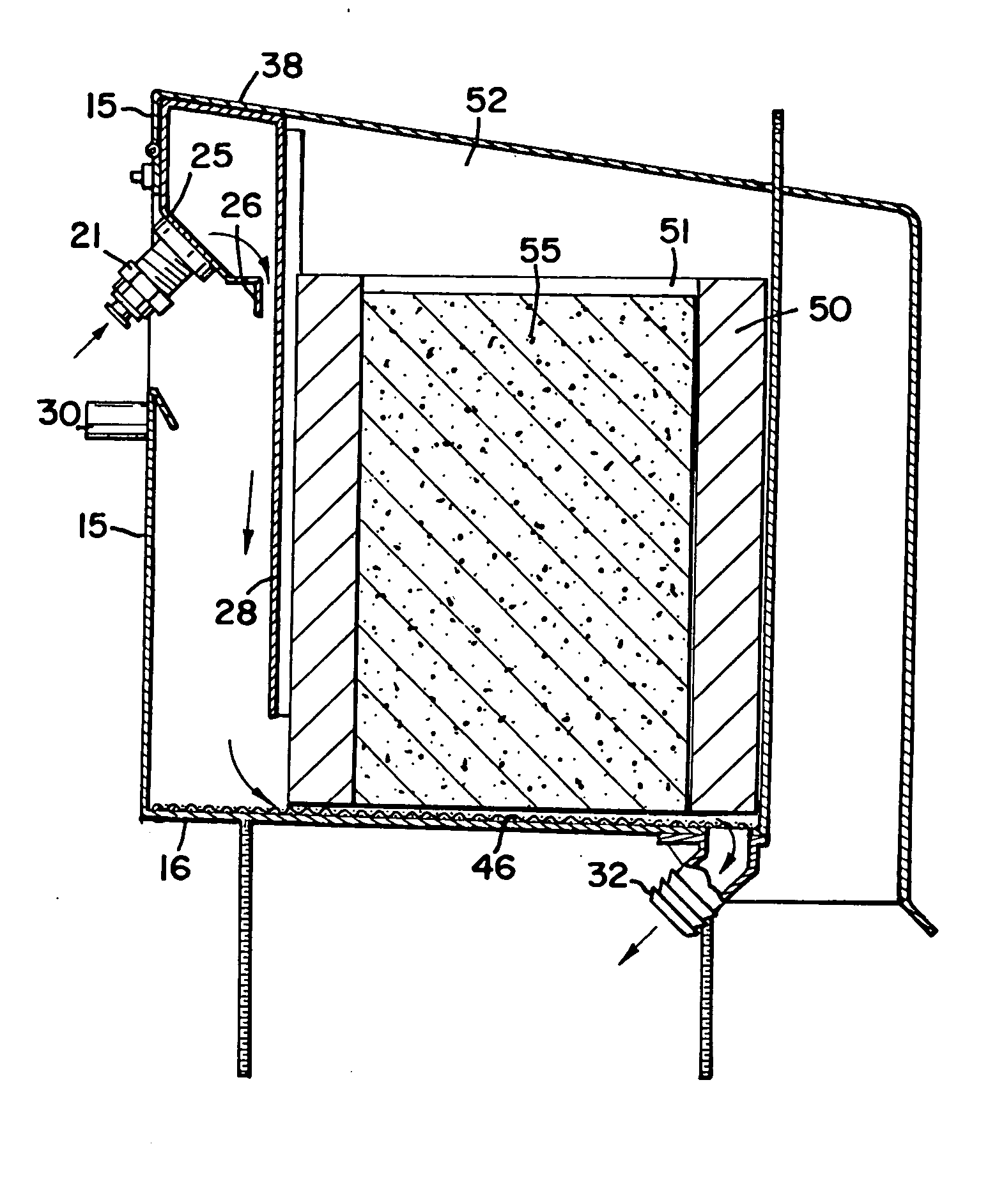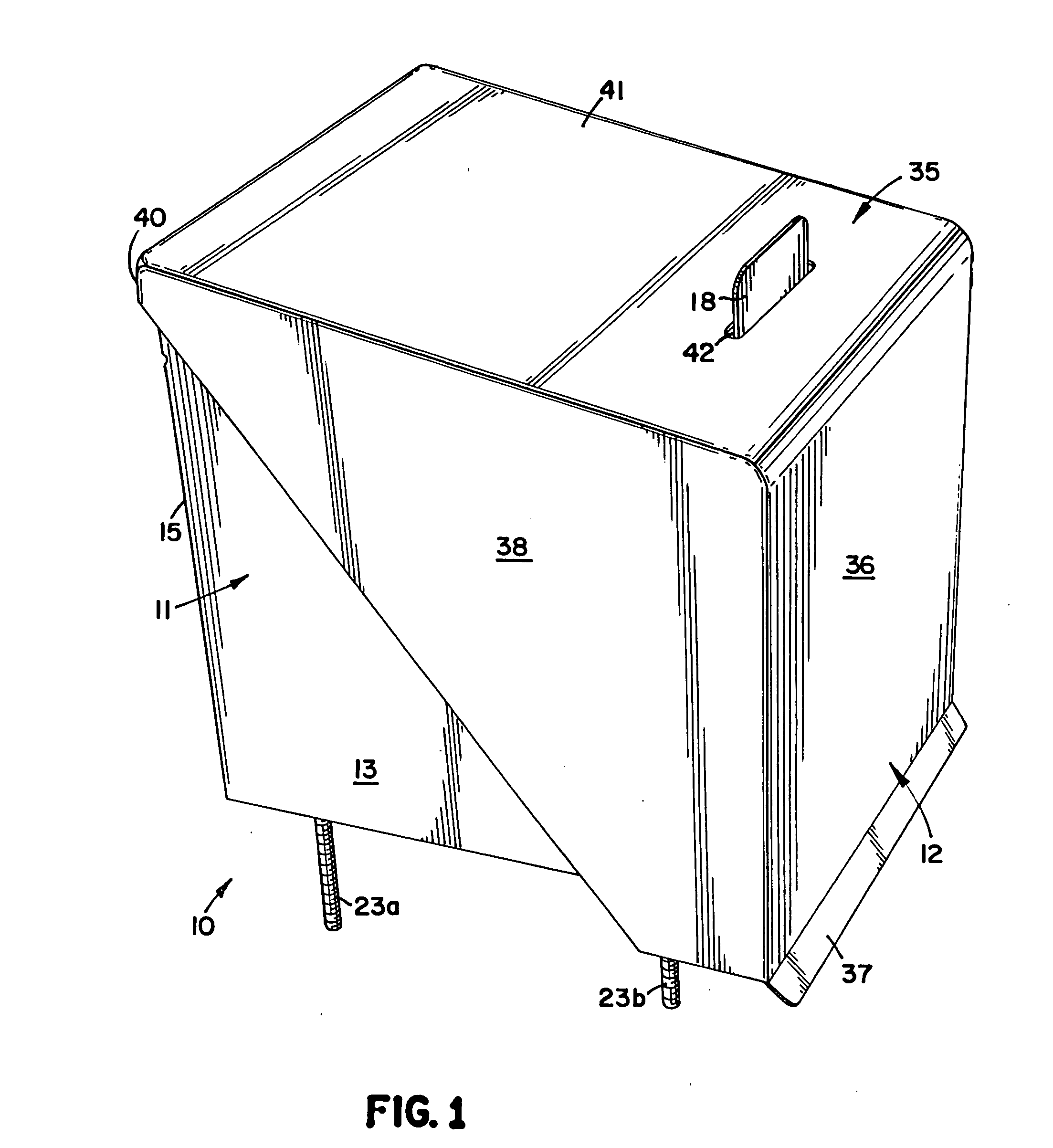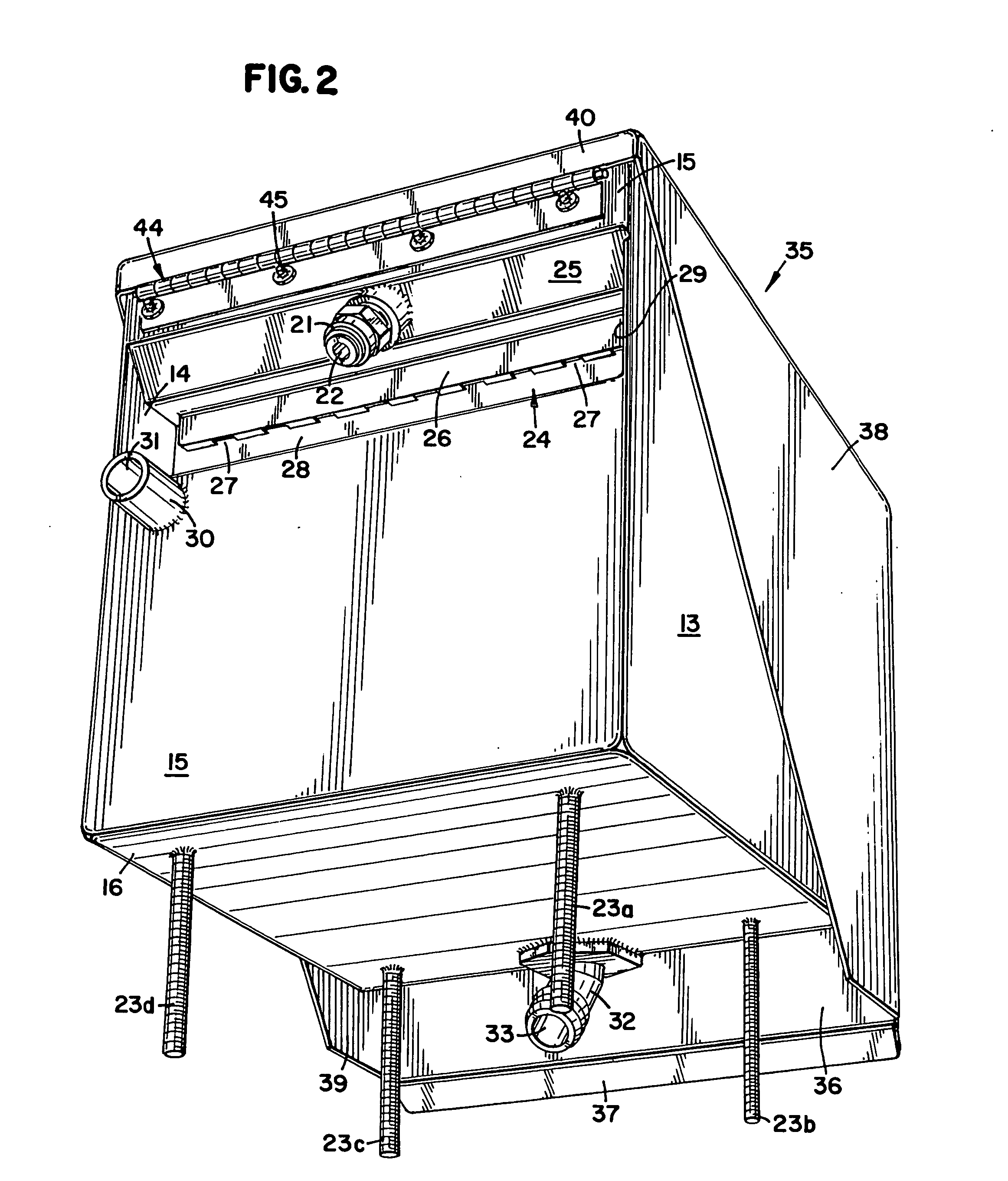Solid rinse additive dispenser
a technology of additive dispensers and solid products, applied in the direction of dissolving, washing/rinsing tableware details, using liquids for cleaning, etc., can solve the problems of unpredictable concentration of use solutions and excessive dissolving of products
- Summary
- Abstract
- Description
- Claims
- Application Information
AI Technical Summary
Benefits of technology
Problems solved by technology
Method used
Image
Examples
example 1
[0036] A test was conducted to determine the dispensing rates of a solid rinse additive, DRY FUSION by Ecolab Inc., when different amounts of water were added to the dispenser. Water was added about every 90 seconds, and the water was approximately 120° F. Dispensing rates for the solid rinse additive were determined by calculating the concentration of rinse additive in the use solution dispensed from the use solution outlet of the dispenser. A dye used in the rinse additive absorbs at 620 nanometers, and a UV / vis spectrophotometer was used to determine the dispensing rates. The results shown in Table 1 indicate that the dispensing rate of the product can be controlled by controlling the volume of water used in the dispenser during each cycle.
TABLE 1Dispensing Rates of DRY FUSION When Water is Added at Different RatesPPMActivesAmount ofBeginningAverageEndingPPM in 1.7in 1.7Water (ml)AbsorptionAbsorptionAbsorptionPPMgallonsgallons1000.0740.0570.056133820111850.0810.0560.05613143822...
example 2
[0037] A test was conducted to determine the dispensing rates of a solid rinse additive, DRY FUSION by Ecolab Inc., as the solid rinse additive was dispensed over time. The support member and the insert block member were used with the dispenser. 120 milliliters of water at 120° F. was added to the dispenser for 7 second cycles, with 60 seconds between each cycle, for 2 days. The solid rinse additive was dispensed at a rate to yield approximately 32 to 62 ppm actives (surfactants) in the use solution in the dishwashing machine washtank. A 57% active solid rinse additive was used in this example, but it is recognized that any percentage active solid rinse additive may be used and the dispenser may be adjusted to achieve the desired dispensing rate to yield approximately 32 to 62 ppm actives in the use solution in the dishwashing machine washtank. The beginning weight of the rinse additive was 449.17 grams and the ending weight of the rinse additive was 51.79 grams. The results are sho...
PUM
| Property | Measurement | Unit |
|---|---|---|
| Fraction | aaaaa | aaaaa |
| Volume | aaaaa | aaaaa |
| Volume | aaaaa | aaaaa |
Abstract
Description
Claims
Application Information
 Login to View More
Login to View More - R&D
- Intellectual Property
- Life Sciences
- Materials
- Tech Scout
- Unparalleled Data Quality
- Higher Quality Content
- 60% Fewer Hallucinations
Browse by: Latest US Patents, China's latest patents, Technical Efficacy Thesaurus, Application Domain, Technology Topic, Popular Technical Reports.
© 2025 PatSnap. All rights reserved.Legal|Privacy policy|Modern Slavery Act Transparency Statement|Sitemap|About US| Contact US: help@patsnap.com



